Maker - Burke Whistles (Michael Burke) www.burkewhistles.com
Material - Aluminum (or Brass) with Delrin plug and mouthpiece
Dimensions: Length - 22 5/8ths"
Distance between 1st and 3rd bottom holes - 3"
Diameter of 2nd hole from bottom - 1/2"
Bore - 1"
Weight - 5.5 oz Aluminum (10 oz Brass)
Price at time of review - $280.00 US direct from Maker ($300 for Brass version, see bottom)
I purchased this whistle second hand off the Chiff and Fipple Forum
a little over a year ago. (I have since purchased other whistles
directly from Burkes home website without too much problem, though
sadly I was never able to converse with either Mr. Burke or a
representative of Burke whistles over the phone or via email despite
repeated attempts) Michael Burke has created quite the reputation for
himself both with professional players (his whistles are used by the likes of Joannie
Madden) and the general whistle community. In fact, it was this
popularity that had made me putting off reviewing this whistle for so long
(all though after the flaming I experienced over my Overton review,
you'd think I'd be ready for it by now).
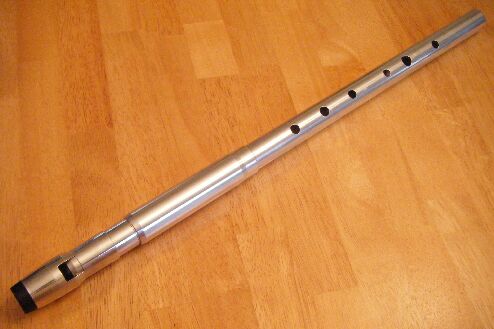
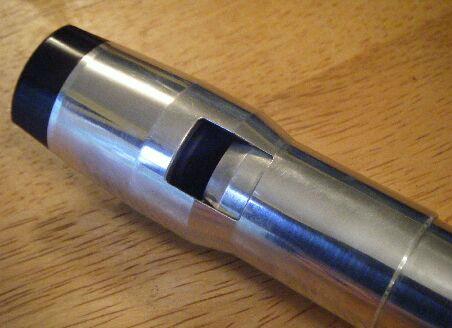
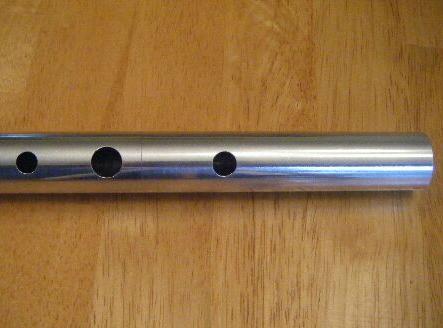
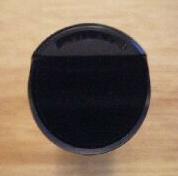
Appearance:
It's pretty easy to see where the "Viper" got it's name from. The
flared head does kind of resemble the head of a snake, and the long
exterior tuning slide suggests the furled hood of a cobra. I have to be
honest and say I wasn't too crazy about how it looked the first time I
saw it, as it kind of irked my "tube with holes in it" zen
sensibility. But it has grown on me since to the point where it
doesn't bother me, and as you will see below, this whistle more than
makes up for it's looks with it's playability. I really like how the
Delrin block was extended to form the end of the mouthpiece. This not
only makes it more comfortable, but also keeps you from having to put
the aluminum in your mouth, which can sometimes lead to wear/mouth
marks on the aluminum. Another nifty feature is that the bottom
section/last hole of the whistle can be rotated to create an offset
hole for ease of reach. I personally found I preferred it in line, but
others might find this feature "handy". The Burke Viper differs from
other low whistles in allot of ways, one of which is that it can be
broken down into three separate pieces, the head, tuning slide and
lower body. The tuning slide is lined with delrin along with what
appear to be rubber rings. These combine to create an excellent seal,
but still allow for easy adjustment. (I have heard stories of some
peoples Burke whistles tuning slides "freezing", and Burke whistles
does recommend that you break down the whistle and lubricate/grease the
"O-rings" every month or so to prevent this from happening. I have not
experienced this issue with any of my Burke whistles yet) While not
necessarily a factor of appearance, another great feature that sets the
Viper apart is it's weight. Weighing in at 5.5 oz, this is the lightest
aluminum whistle I have yet played, which really helps in the arm
fatigue department. However, this was somewhat tempered for me by it's
slightly larger bore size, which I found to be less comfortable on my
hands than other, smaller diameter whistles.
Tone: This is probably where I am going to get in trouble. The Burke Viper most likely has the purest, clearest tone of any low whistle out there. It pretty much has zero breathiness, although it does manage to have a small amount of chiff. Some people say that it has a very flute like tone, but I somewhat disagree in that a flute, especially a wooden Irish flute, can be very breathy depending on how it is played. Now I do like the tone of the Viper, it is again very different from any other low whistle, something I look for and enjoy when trying new whistles. But often times when I am playing it, I will suddenly put it down and reach for a different whistle as the tone just seems to be lacking in depth and/or complexity. It just doesn't seem to scratch this "aural itch" as it were that I have when it comes to Irish low whistles in particular. Now again, THIS IS JUST MY OPINION, I know for a fact that others do not feel this way. I also know that the Burke Viper can sound achingly beautiful, just check out the stunning sound clip by Brian McCoy of "the Kells" posted on the Burke whistles website (on the Viper page). However, I feel that the use of reverb on this recording goes a long way in making up for the lack of depth in the Vipers tone.
Volume: I would describe the volume of this whistle as being fairly loud in comparison to other Low D's I have played. I have heard some people say that they have successfully used their Viper low D in a session environment. It is very well balanced in volume between octaves, which can be pretty uncommon in low whistles. My favorite feature of the Viper though has to be it's huge, resonant fundamental D note. You can really lean into this note without worrying about it breaking and blast it. However, a small side effect of this is that it can draw attention to how weak the low E note is, which does break somewhat easily. (I have found this to be a larger issue on my aluminum Burke low C and Brass Low D, than on this aluminum Viper)
Backpressure/air requirement: This whistle is the epitome of an easy blower, but does not suffer from some of the problems most easy blowers do. It moves effortlessly between octaves, yet (with the exception of the aforementioned low E) neither octave breaks overly easy at all. No squawking, no awkward changes in breath support or embouchure, just clear sailing. I would say it has moderate to low backpressure, giving it a somewhat higher than average air requirement. As an easy blowing whistle, this would make a good beginners low D as it is very forgiving. However, I think that more advanced players may find the lack of backpressure and higher air requirement limiting, but again, in the end backpressure is a matter of personal preference.
Responsiveness: Ornaments can feel slightly sluggish at times, especially if I've just been playing one of my more responsive whistles. I wouldn't say that it was a problem, just that they are not as snappy and quick as I would like. But I would be remiss if I did not again mention how easy and effortless this whistle is to play.
Clogging: I have not experienced any clogging issues with this whistle.
Tuning: I found this whistle to be satisfactorily in tune all the way around, with the C natural coming in good using the OXXXOO fingering.
Sound clip: Bobby Casey's
Again, I would also highly recommend checking out the sound clip of a Viper posted on the Burke whistle website by Brian McCoy. It is of the tunes Amhran na Leabhair and the Fermoy lasses and can be heard here.
Summary: There were times when the weight of popular opinion made me consider giving this whistle all six holes. The Viper certainly has allot going for it and I have not and would not have a problem with recommending this whistle to most anyone. But I have to say that I have other low D's that, while being harder to play, get me more excited to pick up and play at the end of the day. Five holes.

Addendum:
I had purchased a Burke Low D in Brass direct from the Burke whistle website with the intention of writing a separate review, but it ended up being so similar to the aluminum I just decided to add a few comments on to this review instead.
The biggest difference between the two whistles is visual/cosmetic, the first obviously being color. The mouth pieces are shaped a little different, more of the length of the tip of the Brass's mouth piece consists of delrin then the aluminum and the Brass is tapered on the delrin mouth piece portion, where the aluminum is tapered on the head piece itself. The tuning slide of the Brass is also slightly longer as well. The Brass does not have the rotating joint on the bottom of the whistle which the aluminum has that allows for offsetting of the bottom hole. The Brass is also obviously considerably heavier than the aluminum due to the difference in construction material, with the Brass coming in at almost twice the weight of the aluminum.
Tone wise the Brass is noticeably mellower than the aluminum, which is on the bright side, but other wise the two whistles sound and play almost identically, which is of course very well/good, as mentioned above. The only other difference of note was that the low "E" note on the Brass I had was noticeably weaker than on the aluminum.
If forced to give my opinion on which I prefered, I would probably personally go with the aluminum. Where the tone of the Burkes are already limited in complexity (IMHO), the mellowness of the Brass can make it sound a little duller next to the aluminum. This was surprising for me as I usually prefer the sound of Brass whistles. Weight is certainly also a plus in the aluminums favor as well. For those choosing between the two, also keep in mind that the Brass will tarnish, and so takes a little extra maintenance over the aluminum if you want to keep it looking shiny. However, I would give the Brass Burke the same score of five holes as the aluminum, as they are both well made, high quality, great playing and sounding whistles.
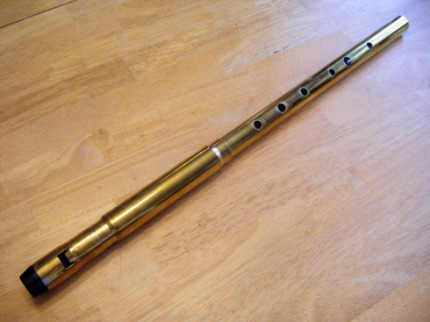
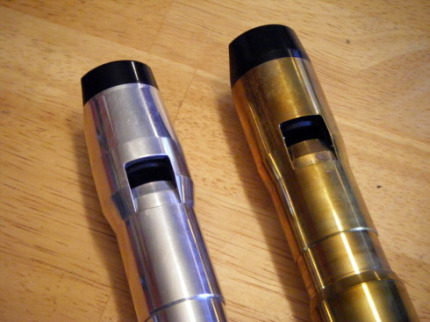
Tone: This is probably where I am going to get in trouble. The Burke Viper most likely has the purest, clearest tone of any low whistle out there. It pretty much has zero breathiness, although it does manage to have a small amount of chiff. Some people say that it has a very flute like tone, but I somewhat disagree in that a flute, especially a wooden Irish flute, can be very breathy depending on how it is played. Now I do like the tone of the Viper, it is again very different from any other low whistle, something I look for and enjoy when trying new whistles. But often times when I am playing it, I will suddenly put it down and reach for a different whistle as the tone just seems to be lacking in depth and/or complexity. It just doesn't seem to scratch this "aural itch" as it were that I have when it comes to Irish low whistles in particular. Now again, THIS IS JUST MY OPINION, I know for a fact that others do not feel this way. I also know that the Burke Viper can sound achingly beautiful, just check out the stunning sound clip by Brian McCoy of "the Kells" posted on the Burke whistles website (on the Viper page). However, I feel that the use of reverb on this recording goes a long way in making up for the lack of depth in the Vipers tone.
Volume: I would describe the volume of this whistle as being fairly loud in comparison to other Low D's I have played. I have heard some people say that they have successfully used their Viper low D in a session environment. It is very well balanced in volume between octaves, which can be pretty uncommon in low whistles. My favorite feature of the Viper though has to be it's huge, resonant fundamental D note. You can really lean into this note without worrying about it breaking and blast it. However, a small side effect of this is that it can draw attention to how weak the low E note is, which does break somewhat easily. (I have found this to be a larger issue on my aluminum Burke low C and Brass Low D, than on this aluminum Viper)
Backpressure/air requirement: This whistle is the epitome of an easy blower, but does not suffer from some of the problems most easy blowers do. It moves effortlessly between octaves, yet (with the exception of the aforementioned low E) neither octave breaks overly easy at all. No squawking, no awkward changes in breath support or embouchure, just clear sailing. I would say it has moderate to low backpressure, giving it a somewhat higher than average air requirement. As an easy blowing whistle, this would make a good beginners low D as it is very forgiving. However, I think that more advanced players may find the lack of backpressure and higher air requirement limiting, but again, in the end backpressure is a matter of personal preference.
Responsiveness: Ornaments can feel slightly sluggish at times, especially if I've just been playing one of my more responsive whistles. I wouldn't say that it was a problem, just that they are not as snappy and quick as I would like. But I would be remiss if I did not again mention how easy and effortless this whistle is to play.
Clogging: I have not experienced any clogging issues with this whistle.
Tuning: I found this whistle to be satisfactorily in tune all the way around, with the C natural coming in good using the OXXXOO fingering.
Sound clip: Bobby Casey's
Again, I would also highly recommend checking out the sound clip of a Viper posted on the Burke whistle website by Brian McCoy. It is of the tunes Amhran na Leabhair and the Fermoy lasses and can be heard here.
Summary: There were times when the weight of popular opinion made me consider giving this whistle all six holes. The Viper certainly has allot going for it and I have not and would not have a problem with recommending this whistle to most anyone. But I have to say that I have other low D's that, while being harder to play, get me more excited to pick up and play at the end of the day. Five holes.
Addendum:
I had purchased a Burke Low D in Brass direct from the Burke whistle website with the intention of writing a separate review, but it ended up being so similar to the aluminum I just decided to add a few comments on to this review instead.
The biggest difference between the two whistles is visual/cosmetic, the first obviously being color. The mouth pieces are shaped a little different, more of the length of the tip of the Brass's mouth piece consists of delrin then the aluminum and the Brass is tapered on the delrin mouth piece portion, where the aluminum is tapered on the head piece itself. The tuning slide of the Brass is also slightly longer as well. The Brass does not have the rotating joint on the bottom of the whistle which the aluminum has that allows for offsetting of the bottom hole. The Brass is also obviously considerably heavier than the aluminum due to the difference in construction material, with the Brass coming in at almost twice the weight of the aluminum.
Tone wise the Brass is noticeably mellower than the aluminum, which is on the bright side, but other wise the two whistles sound and play almost identically, which is of course very well/good, as mentioned above. The only other difference of note was that the low "E" note on the Brass I had was noticeably weaker than on the aluminum.
If forced to give my opinion on which I prefered, I would probably personally go with the aluminum. Where the tone of the Burkes are already limited in complexity (IMHO), the mellowness of the Brass can make it sound a little duller next to the aluminum. This was surprising for me as I usually prefer the sound of Brass whistles. Weight is certainly also a plus in the aluminums favor as well. For those choosing between the two, also keep in mind that the Brass will tarnish, and so takes a little extra maintenance over the aluminum if you want to keep it looking shiny. However, I would give the Brass Burke the same score of five holes as the aluminum, as they are both well made, high quality, great playing and sounding whistles.

